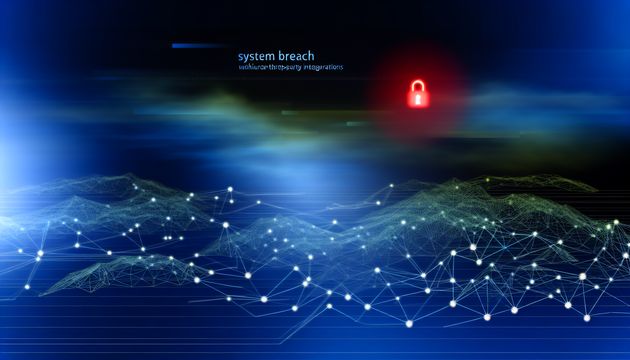
The Cellcom Cyberattack: Lessons in Cybersecurity and Communication Resilience
The recent cyberattack on Cellcom, a major telecommunications provider, has highlighted the vulnerabilities in our communication infrastructure. On the evening of May 14, 2025, customers across Wisconsin and Upper Michigan found themselves unable to make phone calls or send text messages, a disruption that persisted for several days. This incident not only affected personal communications but also had significant economic repercussions for businesses reliant on mobile connectivity. The outage underscores the critical role of cybersecurity in maintaining service reliability and the potential consequences when these defenses are breached. For more details on the impact of this outage, see the Impact of the Outage section.
Impact of the Outage
Disruption of Communication Services
The cyberattack on Cellcom led to a significant disruption of communication services, affecting both voice and SMS functionalities. The outage began on the evening of May 14, 2025, and persisted for several days, impacting customers across Wisconsin and Upper Michigan. Users were unable to make phone calls or send text messages, which are essential services for both personal and business communications. Imagine trying to call a friend or send a quick text to a colleague, only to find your phone as silent as a library at midnight. This disruption underscores the critical role that mobile carriers play in maintaining communication infrastructure and the potential consequences when these services are compromised.
Economic Impact on Businesses
The service outage had a pronounced economic impact on businesses that rely on mobile communication. Small businesses, in particular, may have experienced significant setbacks due to the inability to communicate with customers, suppliers, and partners. The lack of communication could have led to missed business opportunities, delayed transactions, and a potential loss of revenue. Larger enterprises, while potentially having more resources to mitigate such disruptions, would still have faced challenges in maintaining operations without reliable communication channels. The economic repercussions of the outage highlight the importance of robust cybersecurity measures to protect against such incidents and ensure business continuity.
Emergency Services and Public Safety Concerns
The disruption of mobile services also raised concerns about the availability of emergency services. In situations where individuals needed to contact emergency responders, the inability to make phone calls could have posed serious risks to public safety. While alternative communication methods may have been available, the reliance on mobile phones as a primary means of contact in emergencies underscores the potential dangers of service outages. This aspect of the impact emphasizes the need for contingency plans and backup communication systems to ensure that emergency services remain accessible even during cyber incidents.
Customer Trust and Brand Reputation
The cyberattack and subsequent service outage may have affected customer trust and the reputation of Cellcom as a reliable service provider. Customers expect consistent and uninterrupted access to mobile services, and any failure to deliver on this expectation can lead to dissatisfaction and a loss of confidence in the brand. The confirmation of a cyberattack, after initially describing the issue as a technical outage, may have further eroded trust among subscribers. Maintaining transparency and effectively communicating with customers during such incidents is crucial for preserving brand reputation and customer loyalty.
Regulatory and Legal Implications
The cyberattack on Cellcom could also have regulatory and legal implications. Telecommunications providers are subject to various regulations and standards aimed at ensuring the security and reliability of their services. A failure to adequately protect against cyber threats may result in scrutiny from regulatory bodies and potential penalties. Additionally, affected customers may seek legal recourse if they believe that the service outage caused them harm or financial loss. This aspect of the impact highlights the importance of compliance with cybersecurity regulations and the potential consequences of failing to meet these obligations.
Social and Community Impact
The service outage may have also had a broader social and community impact, particularly in rural areas where alternative communication options may be limited. Residents in these areas often rely heavily on mobile services for staying connected with family and friends, accessing information, and participating in community activities. The disruption of these services could have led to a sense of isolation and disconnection, particularly for vulnerable populations such as the elderly or those with limited mobility. The social impact of the outage underscores the importance of ensuring that all communities have access to reliable communication services and the potential consequences when these services are disrupted.
Technical and Infrastructure Challenges
The cyberattack on Cellcom highlights the technical and infrastructure challenges faced by telecommunications providers in securing their networks against cyber threats. The complexity of modern communication networks, combined with the increasing sophistication of cyberattacks, presents significant challenges for providers in maintaining the security and reliability of their services. The incident may prompt a reevaluation of existing security measures and infrastructure investments to enhance resilience against future attacks. This aspect of the impact emphasizes the need for ongoing investment in cybersecurity and infrastructure to protect against evolving threats.
Future Preparedness and Response Strategies
In the aftermath of the cyberattack, Cellcom and other telecommunications providers may need to reassess their preparedness and response strategies for dealing with similar incidents in the future. This could involve implementing more robust cybersecurity measures, conducting regular security audits, and developing comprehensive incident response plans. Additionally, collaboration with industry partners and government agencies may be necessary to share information and resources for combating cyber threats. The focus on future preparedness and response strategies highlights the importance of proactive measures to prevent and mitigate the impact of cyberattacks on critical communication infrastructure.
Emerging Technologies and Cybersecurity
Emerging technologies like Artificial Intelligence (AI) and the Internet of Things (IoT) are transforming the telecommunications landscape. While these technologies offer new opportunities for innovation and efficiency, they also introduce new vulnerabilities. AI can be used to enhance cybersecurity by detecting threats more quickly, but it can also be exploited by attackers to launch more sophisticated attacks. Similarly, IoT devices increase the number of potential entry points for cyber threats. As these technologies become more integrated into our communication networks, it is crucial for providers to adapt their cybersecurity strategies to address these new challenges.
Final Thoughts
The Cellcom cyberattack serves as a stark reminder of the importance of robust cybersecurity measures in safeguarding our communication networks. As we continue to integrate more technology into our daily lives, the potential for disruption increases, making it imperative for telecommunications providers to invest in stronger defenses and contingency plans. This incident also highlights the need for collaboration between industry and government to enhance our collective cybersecurity posture. For a deeper understanding of the challenges and future strategies, refer to the Future Preparedness and Response Strategies section.
References
- Impact of the Outage, 2025, Cellcom source url



